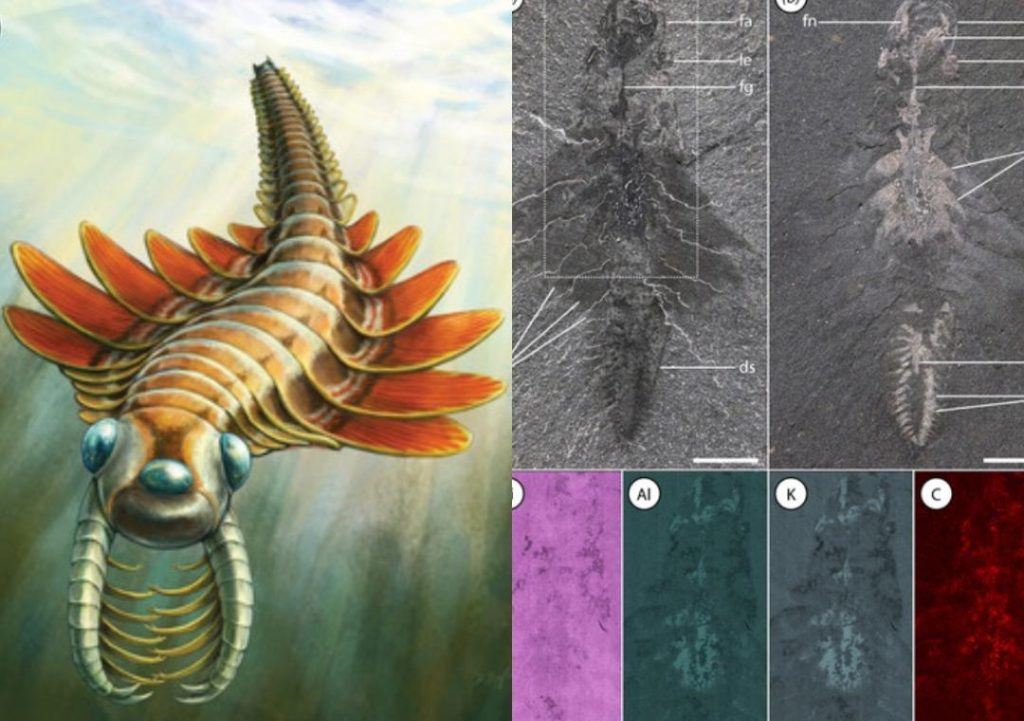
Sea Moth, Who Lived 506 Mn Years Ago, Used Its Butt to Breathe
Deep within the fossil-rich Burgess Shale in Canada, a remarkable discovery has been made that is redefining our understanding of the earliest arthropods. Meet Mosura fentoni, a 506-million-year-old predator commonly referred to as the “sea-moth” due to its unusual body shape. This ancient creature’s fossilized remains have provided scientists with a unique glimpse into the evolutionary history of early life on Earth. And, as it turns out, Mosura had a rather unconventional way of breathing – it used its butt.
The discovery was published in the journal Royal Society Open Science, and the findings have sent shockwaves through the scientific community. Led by Dr. Jean-Bernard Caron, a team of researchers from the Royal Ontario Museum and the University of Toronto made the remarkable discovery. According to the study, Mosura was likely a member of an extinct group of small, early arthropods called radiodonts. These ancient creatures were characterized by their distinctive body shape, which featured a long, slender body with a rounded head and a pair of spiny, jointed claws.
So, what makes Mosura so unique? For starters, its body plan is unlike anything seen before. The sea-moth’s body is divided into three main regions: the head, the thorax, and the abdomen. The head is rounded and features three eyes, while the thorax is long and slender, with the spiny, jointed claws attached. The abdomen, however, is where things get really interesting. It’s here that Mosura’s unique respiratory system comes into play.
The researchers found that the sea-moth’s abdomen was lined with tiny, branching tubes that likely functioned as gills. But here’s the twist – these gills were not located in the usual place, such as the head or thorax, but instead, they were situated in the posterior region of the body, near the anus. This is where Mosura’s “butt” comes into play. It’s believed that the sea-moth used its anal region to extract oxygen from the water, a process that would have been essential for its survival.
This unusual respiratory system is thought to have been an adaptation to the low-oxygen environments of the ancient oceans. Mosura’s ability to extract oxygen from the water using its anus would have given it a competitive edge over other predators, allowing it to thrive in environments where others may have struggled to survive.
The implications of this discovery are far-reaching, providing new insights into the evolutionary history of arthropods and the development of respiratory systems in ancient animals. As Dr. Caron notes, “The discovery of Mosura fentoni is a game-changer for our understanding of the evolution of arthropods and the development of respiratory systems in ancient animals.”
The Burgess Shale, where Mosura’s fossilized remains were found, is a treasure trove of ancient fossils. The shale is known for its exceptional preservation of fossils, with many of the specimens still retaining their original colors and textures. The discovery of Mosura is just the latest in a long line of remarkable finds made in the shale, including the discovery of ancient trilobites, brachiopods, and even the earliest known ancestor of modern humans.
As we continue to uncover the secrets of the Burgess Shale, we’re reminded of the incredible diversity of life on Earth and the remarkable adaptations that ancient animals developed to survive in their environments. Mosura fentoni, the sea-moth with its unusual respiratory system, is just one example of the many fascinating creatures that have left their mark on our planet’s history.
Source:
https://royalsocietypublishing.org/doi/10.1098/rsos.242122






